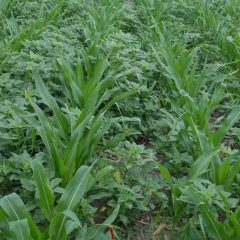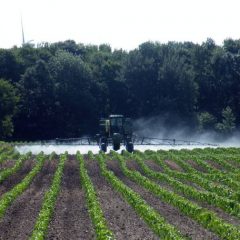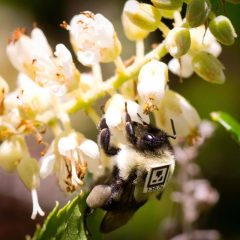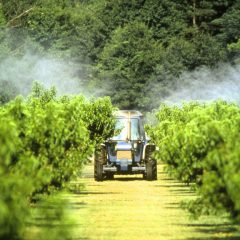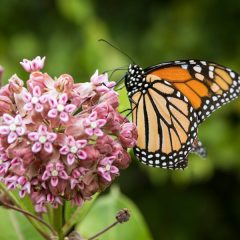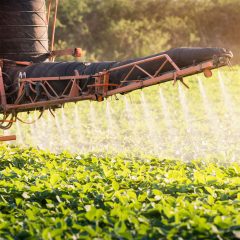DTN staff reporter Emily Unglesbee has ably covered the dicamba-drift crisis over the past couple of years. Her latest is a detailed, three-part series on Palmer amaranth, “possibly the most aggressive weed American farmers have ever faced” (Unglesbee, 2019a). Palmer amaranth is so scary because of its “spectacular reproductive abilities” and it’s extreme adaptability. This […]
Read More, References, Comment »
Phosphorous is a key nutrient promoting plant growth, and a standard ingredient in many fertilizer blends. But if too much phosphorous ends up in the region’s watershed, it can wreck havoc on wetlands, streams, and lakes, causing harmful algae blooms (like the extreme cyanobacteria algae blooms in Lake Erie last year) and depletion of dissolved […]
Read More, References, Comment »
A team of epidemiologists studied the impact of occupational exposures to organic solvents, metals, and pesticides among 7,404 Hispanic/Latino workers in four major urban areas, and reported a surprisingly high Odds Ratio of 2.18 (confidence interval of 1.34 to 3.55) for some form of cardiovascular disease, or CVD. For atrial fibrillation (a-fib), one of the […]
Read More, References, Comment »
Note to Hygeia Readers — Ford Baldwin is a weed scientist that has worked to promote integrated weed management systems in Arkansas over a long career. In fact, his contribution was recognized this year when he was inducted into the Arkansas Agriculture Hall of Fame. He has been deeply involved since 2016 in trying to […]
Read More, References, Comment »
We know that neonicotinoid insecticides are no-good for bees and other pollinators, even at very low levels of exposure. We know the major neonic — imidacloprid (Admire®) — is the single most acutely toxic pesticide to bees ever discovered, narrowly edging out the former #1 methyl parathion. But scientists are still trying to figure just […]
Read More, References, Comment »
By Rachel Benbrook The state of kid’s nutrition is getting some renewed attention in the U.K. in response to a new report released by the UK Soil Association‘s Food for Life program. In particular, the British government’s program that provides free, fresh produce to young children in state funded schools, the School Fruit and Veg Scheme, is […]
Read More, References, Comment »
The State of California is taking steps to restrict use of the insecticide chlorpyrifos over concerns it is “harming the brains of babies.” In temporary guidelines issued this week, the California Department of Pesticide Regulation recommends farmers discontinue use on most crops and increased the required spray perimeters for the rest. They also order a […]
Read More, References, Comment »
Troubling and significant declines in monarch butterfly populations in Florida have occured over the last 30+years, according to a research team from the McGuire Center for Lepidoptera and Biodiversity, part of the Florida Museum of Natural History. A paper by the FLA team was published this summer in the Journal of Natural History, and reports […]
Read More, References, Comment »
Much will be said about the EPA’s October 31, 2018 decision to extend for two more years the conditional registration of the three dicamba-based herbicides registered for post-emergence, “over the top” (OTT) applications on soybeans and cotton. The basics of the EPA’s decision are simple and not entirely meaningless in terms of reducing the extent […]
Read More, References, Comment »
AgPro reports that the first dicamba drift damage trials are on track to begin a year from now in October 2019. Several cases have been combined into a federal multidistrict litigation, and that case is moving forward in U.S. District Court in Missouri. The first case in this MDL to be heard will be that of […]
Read More, References, Comment »

